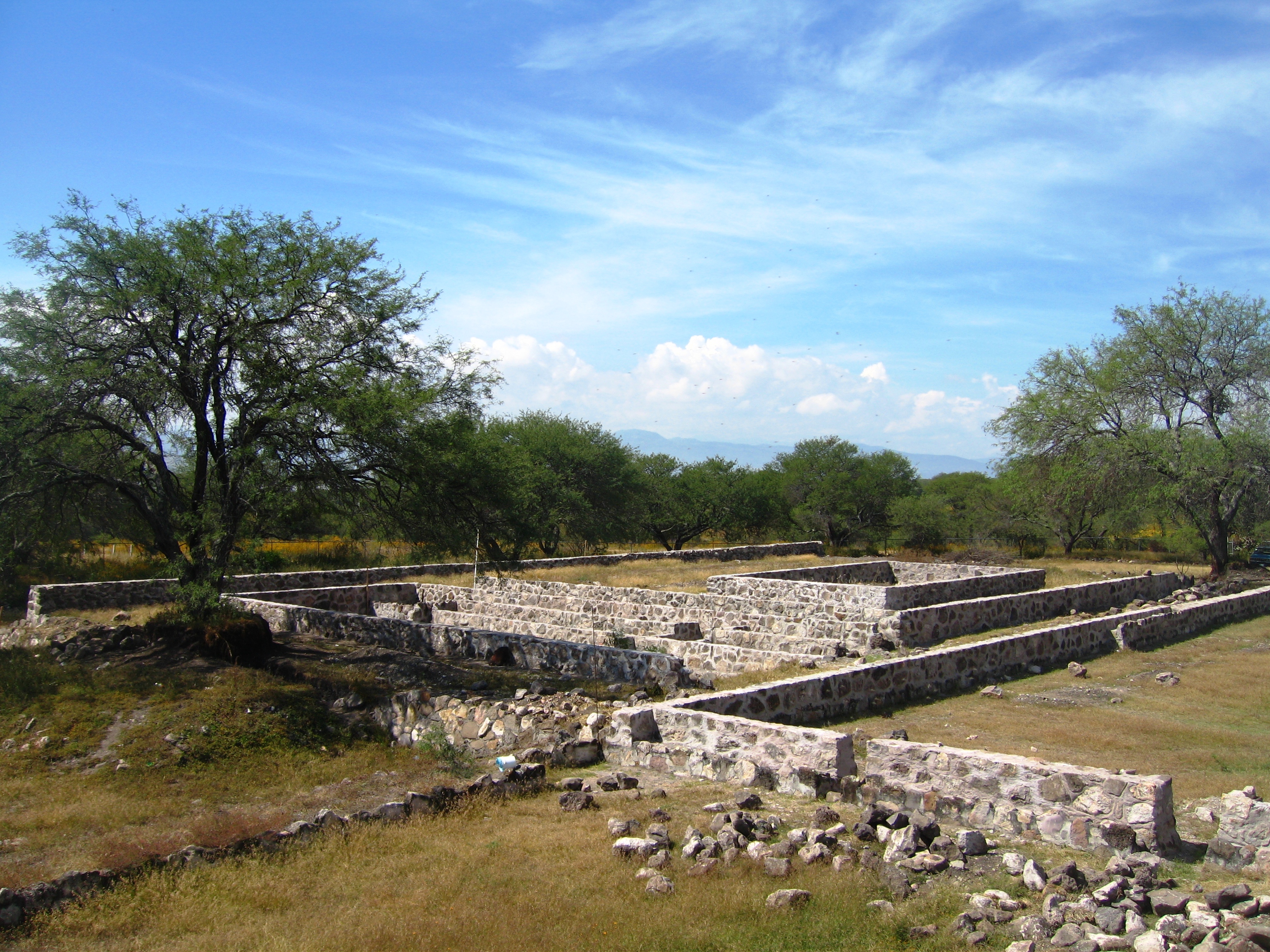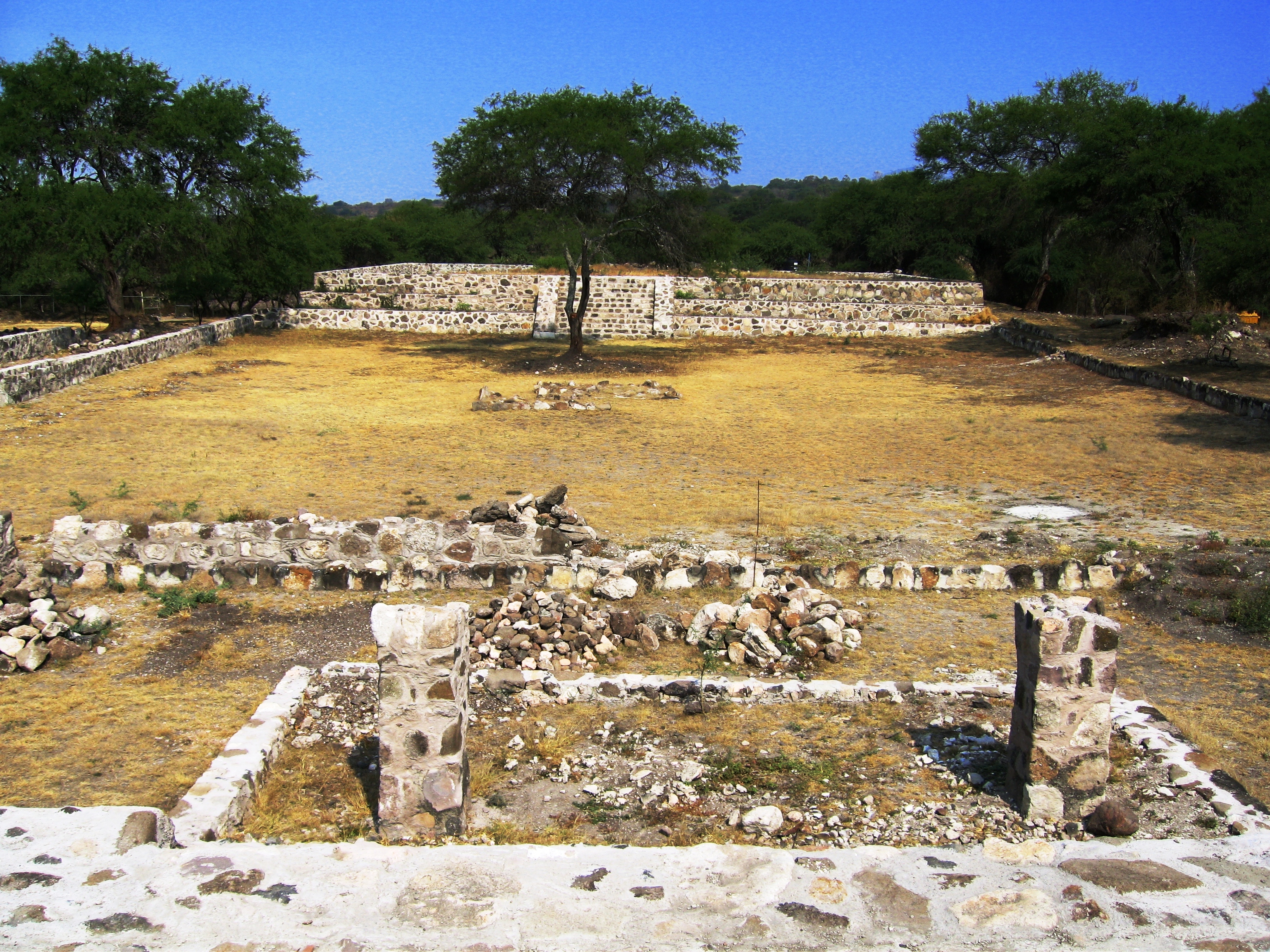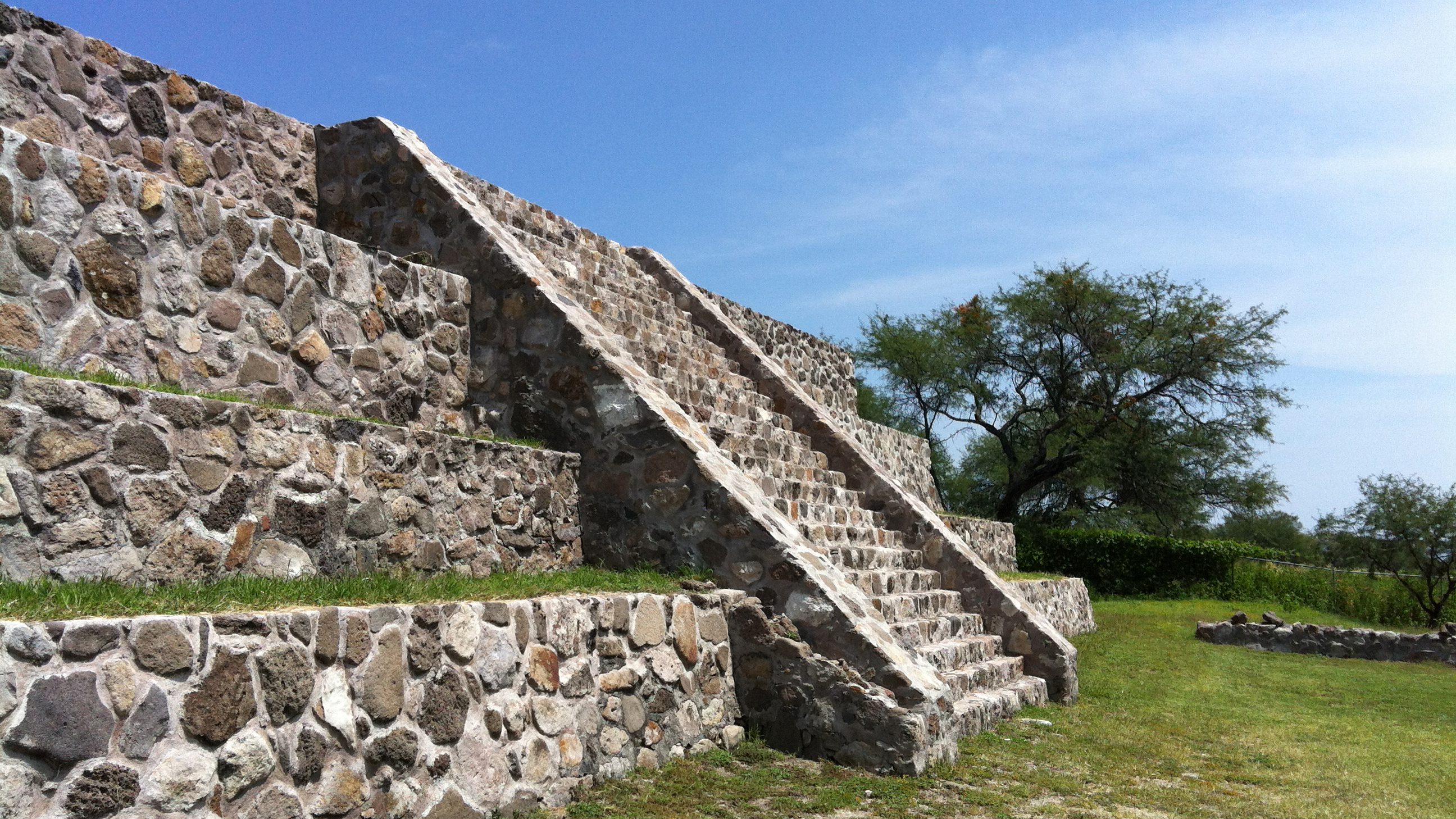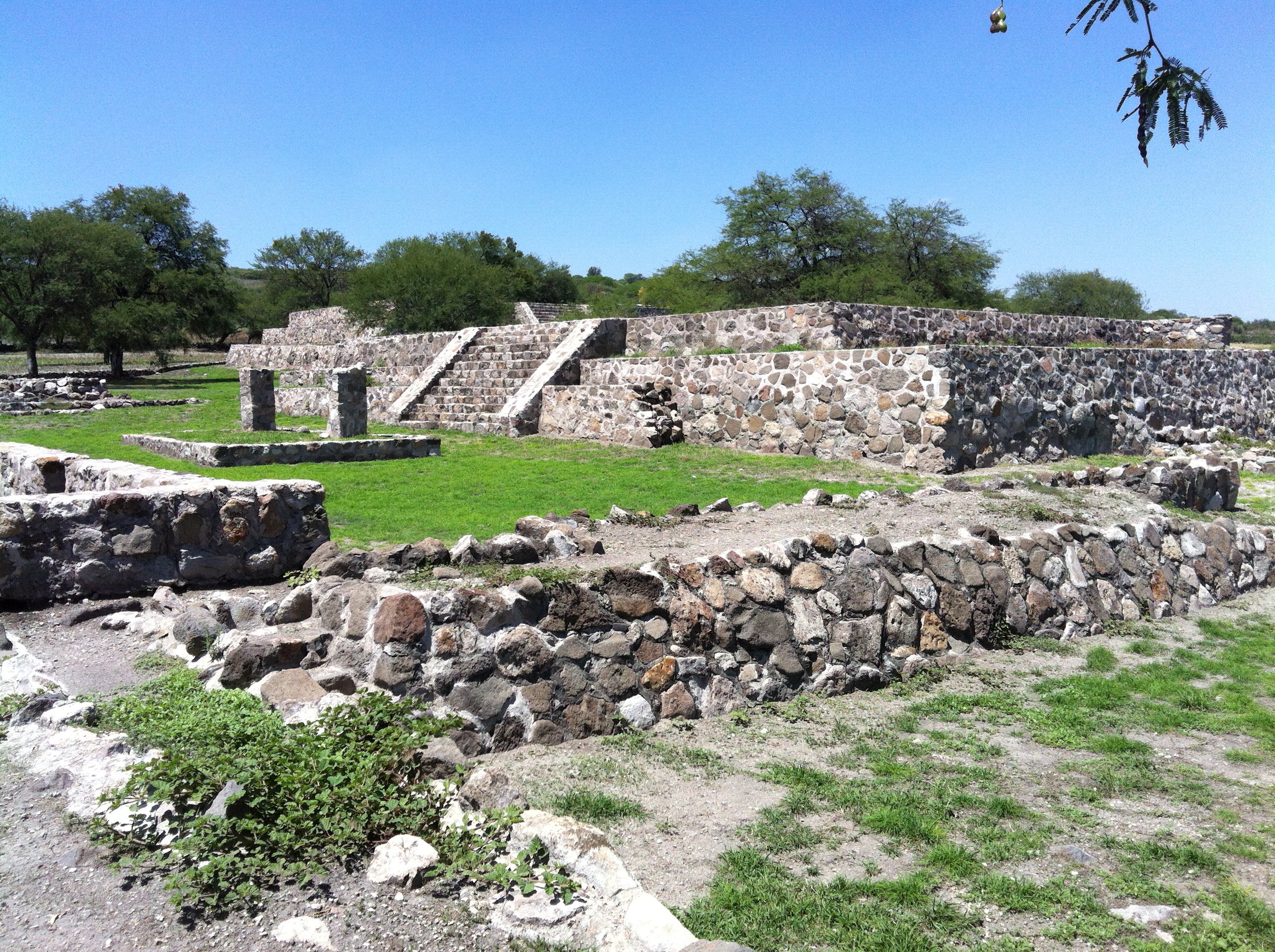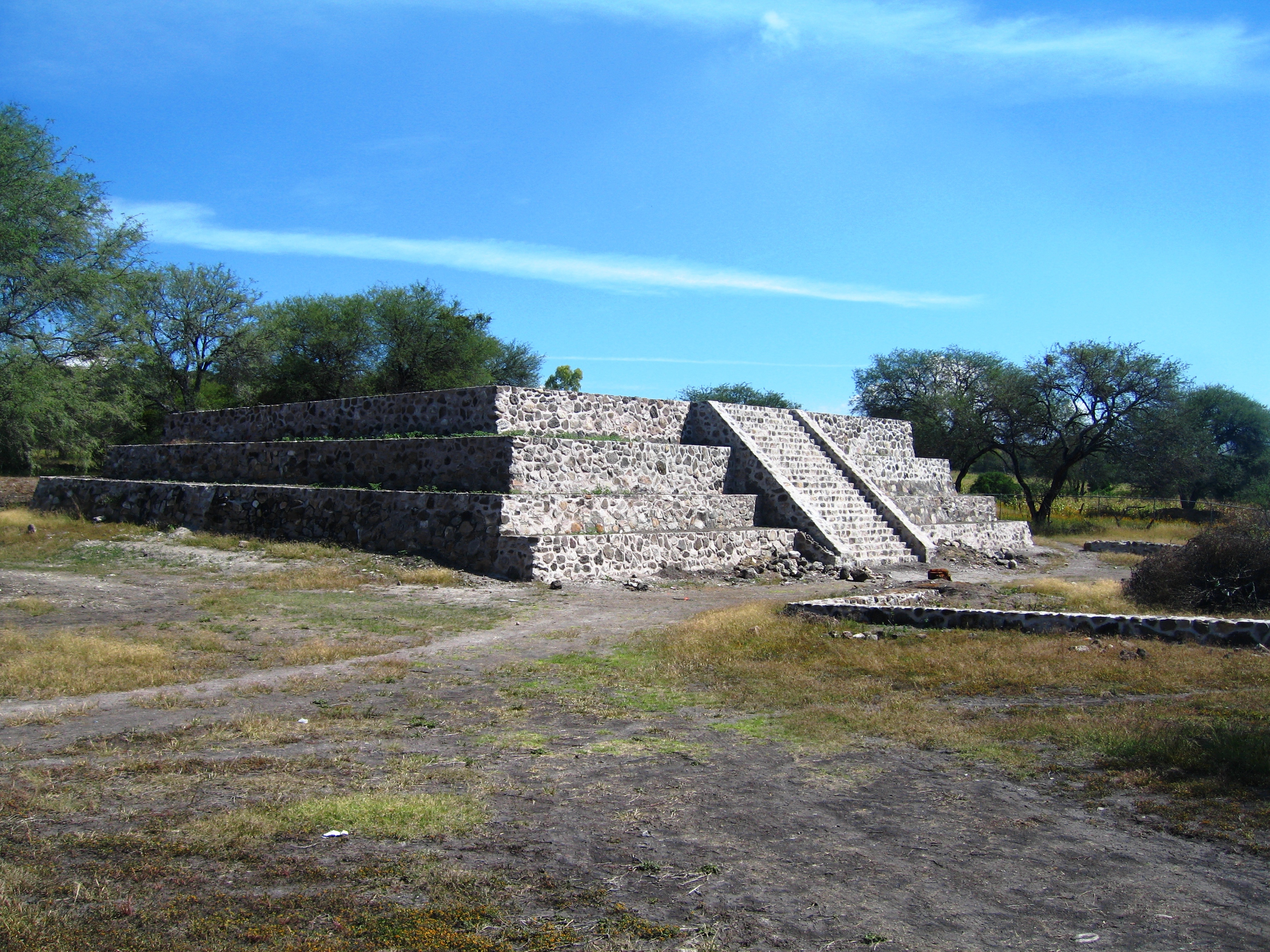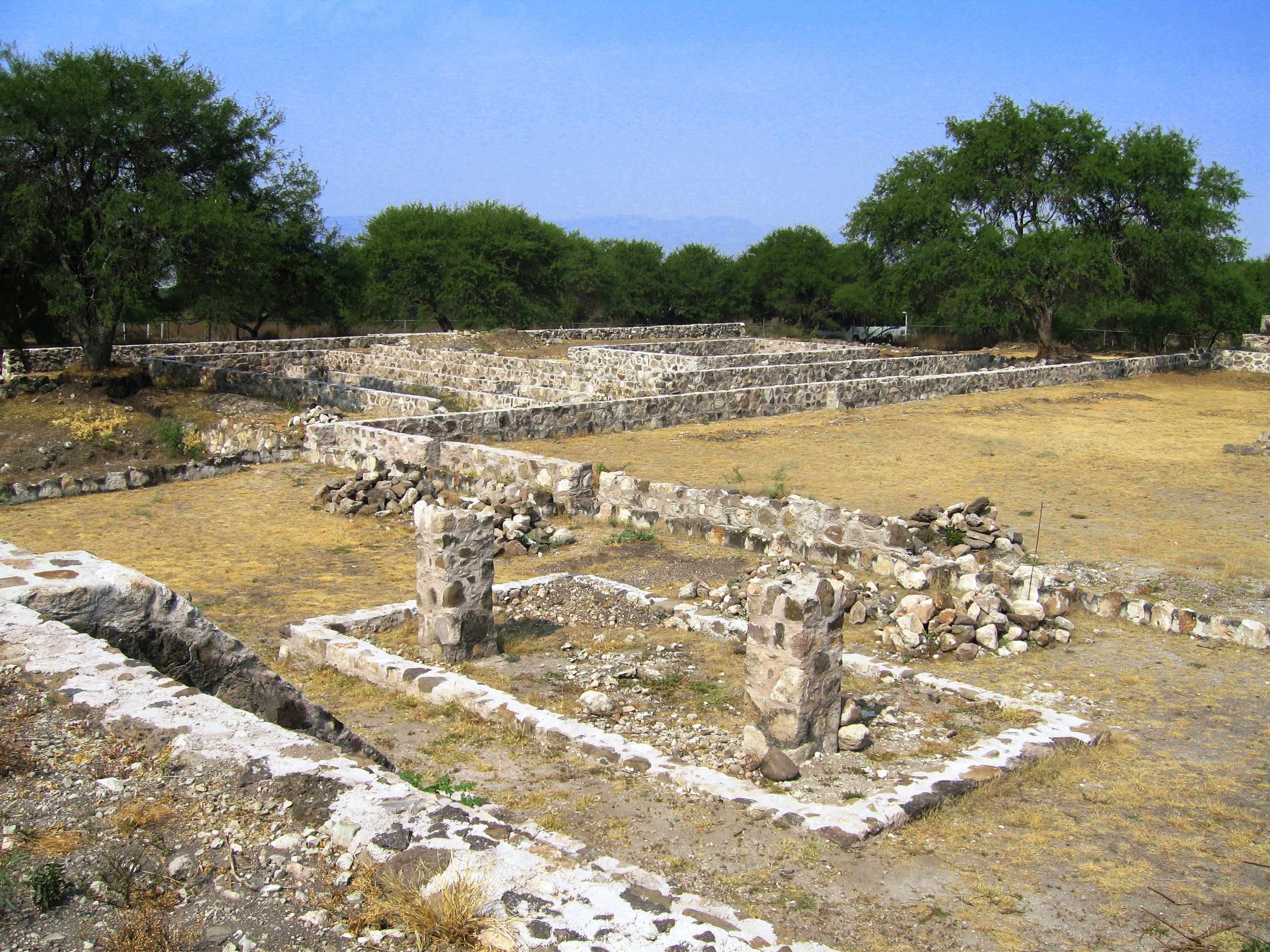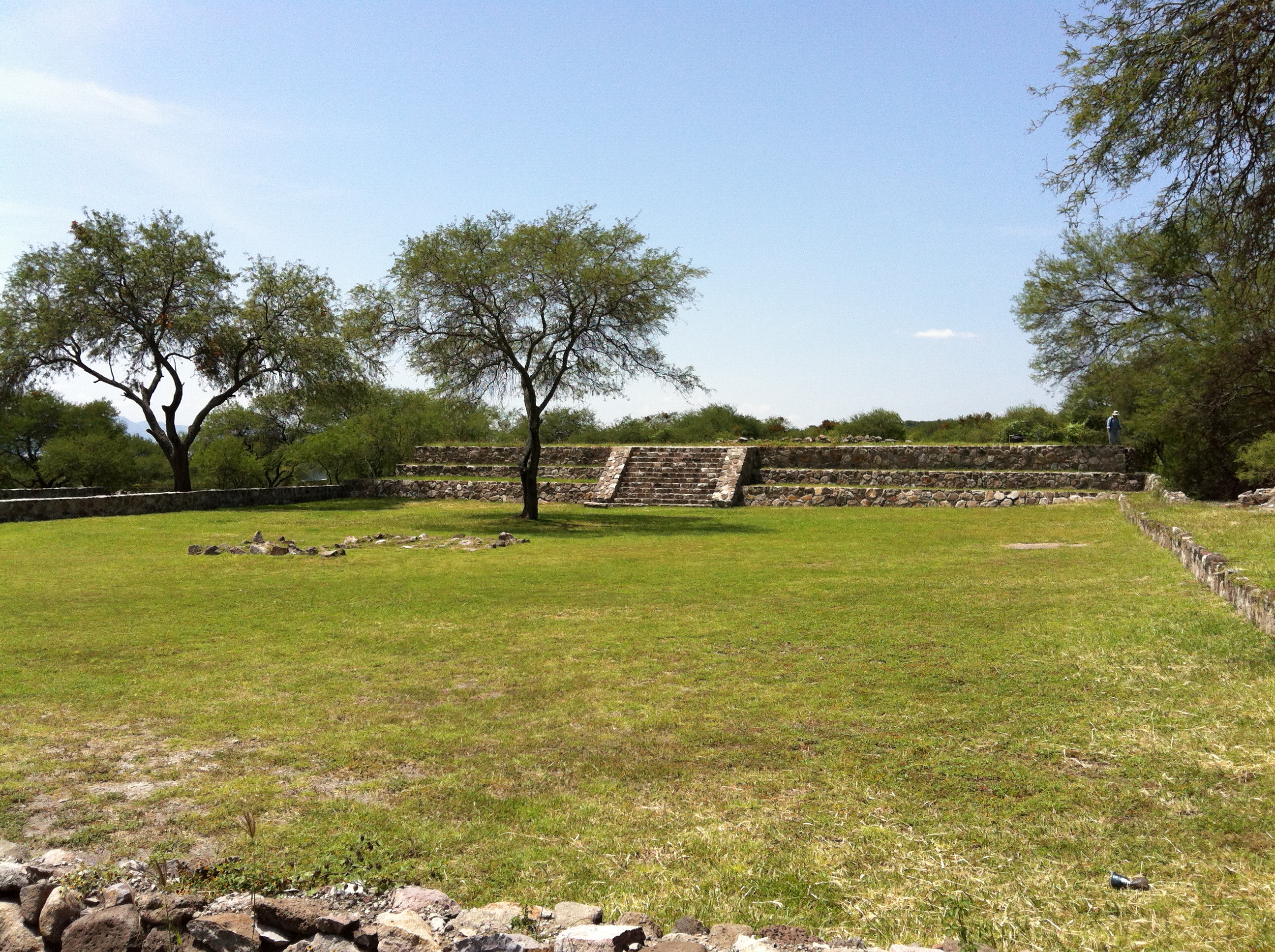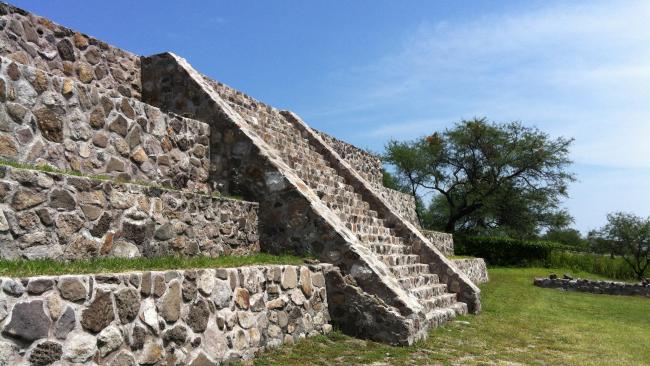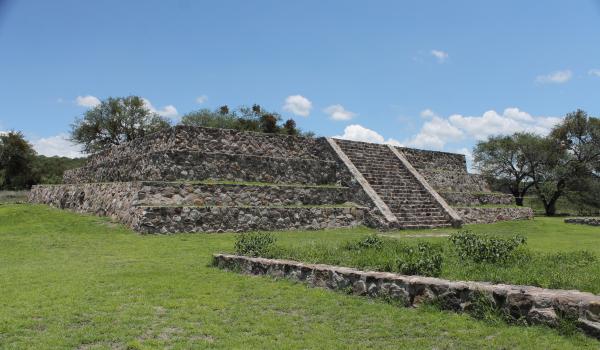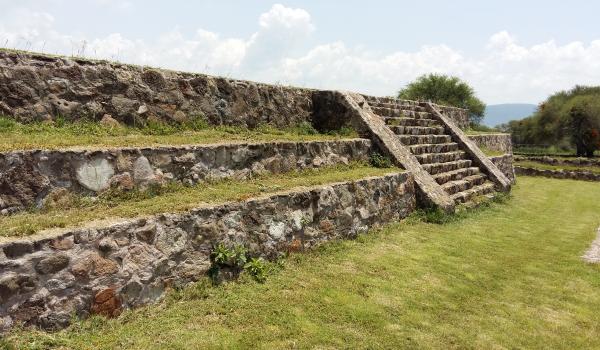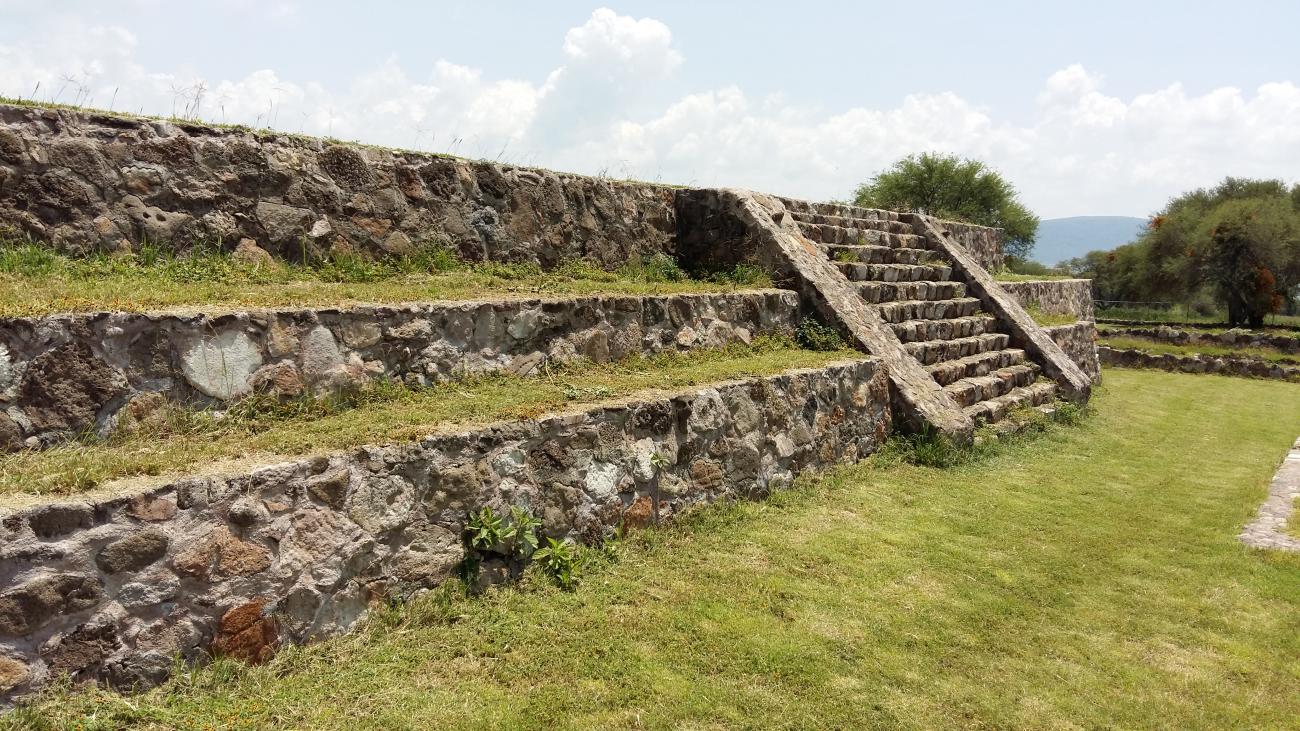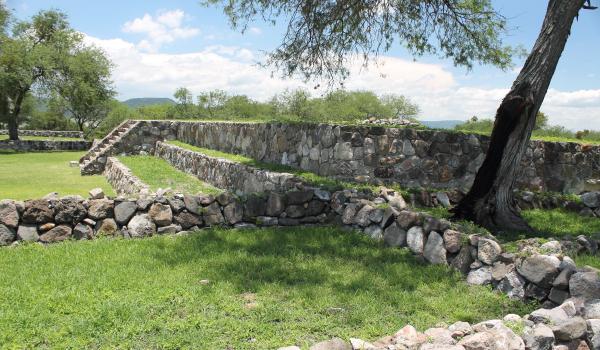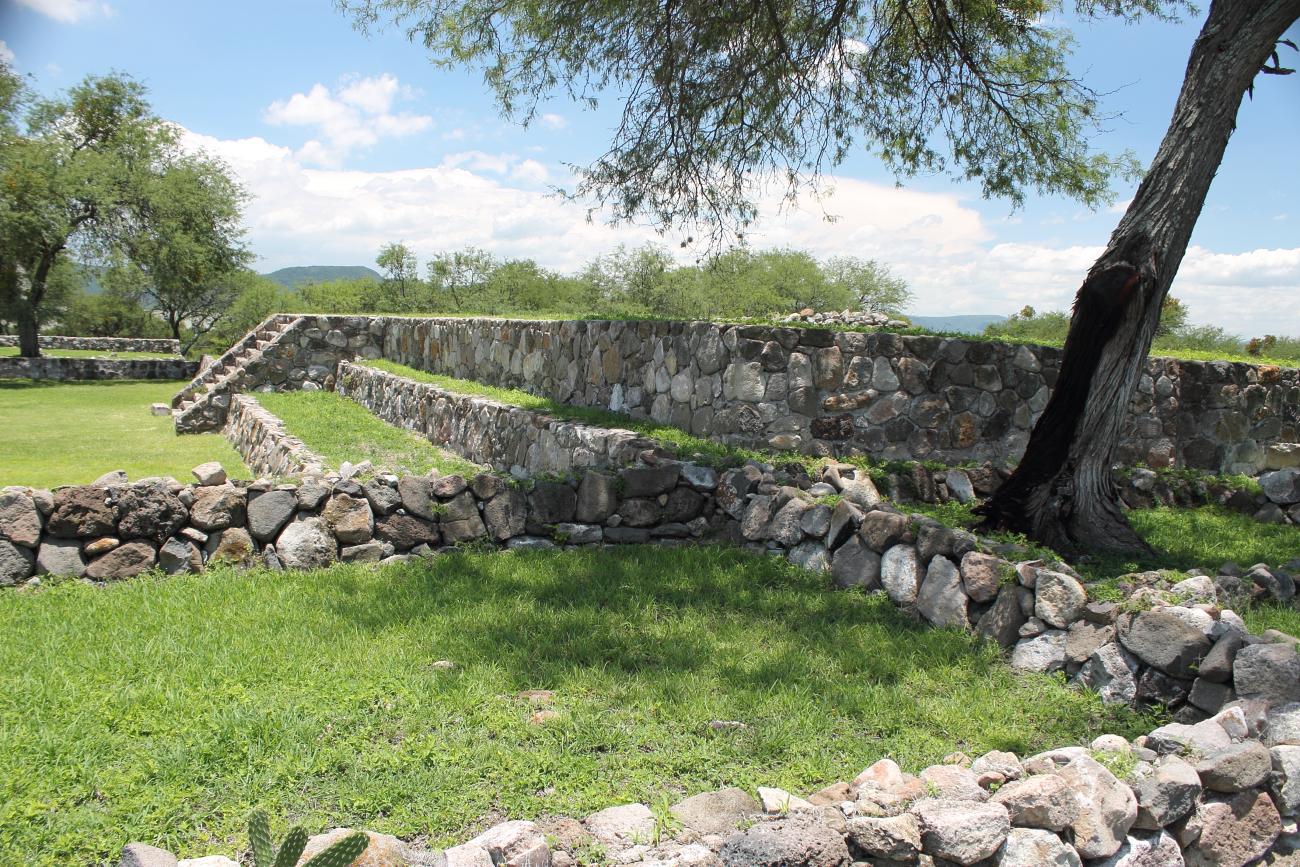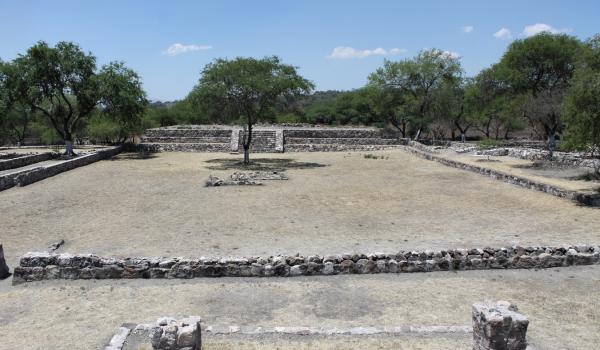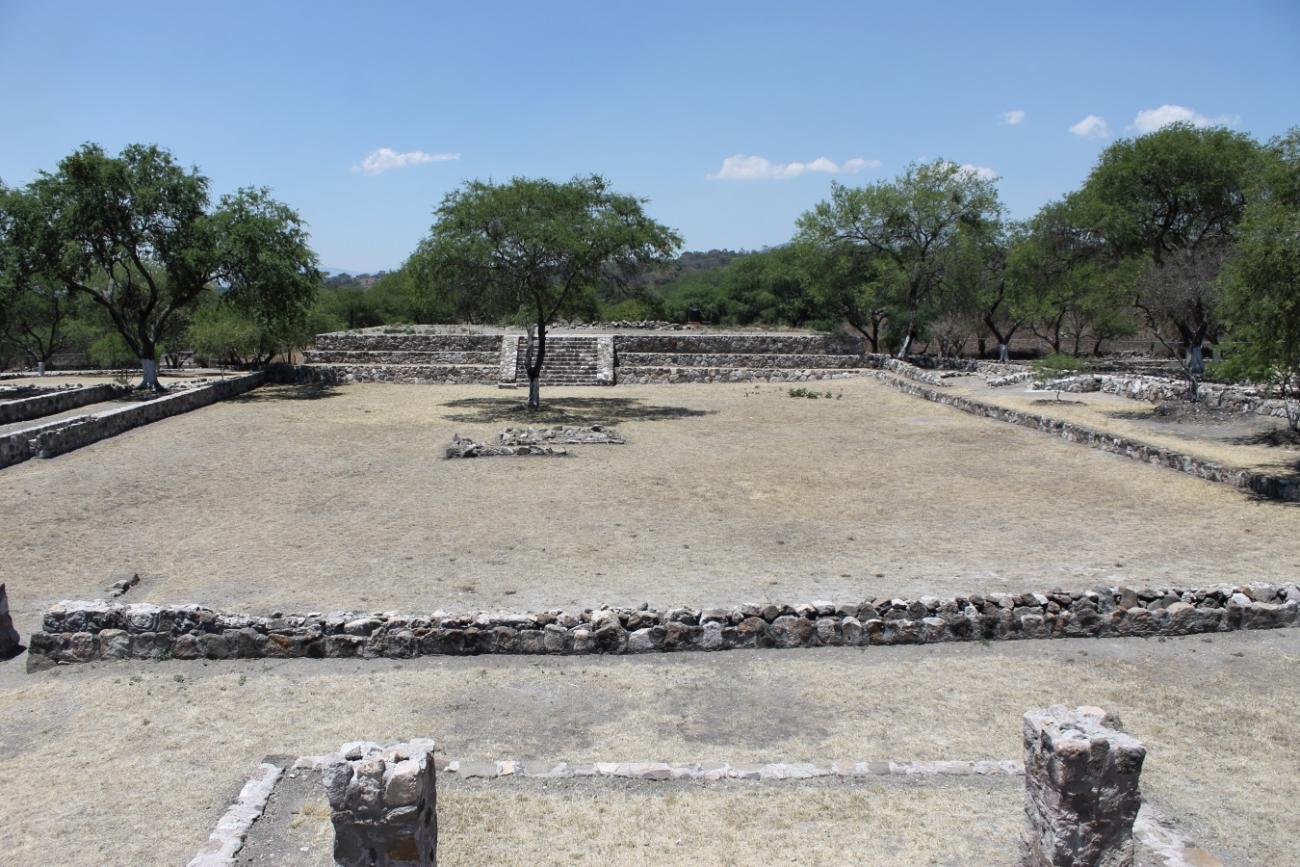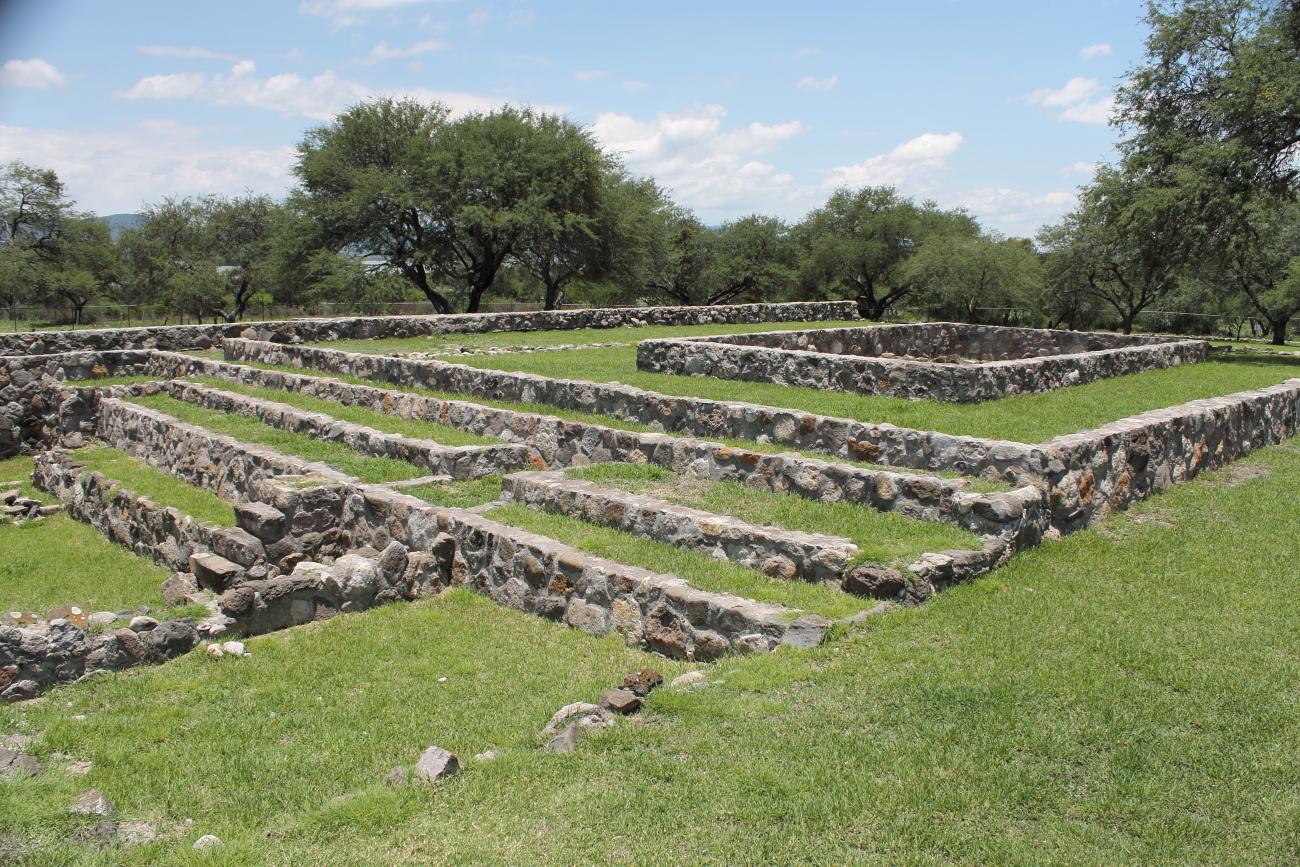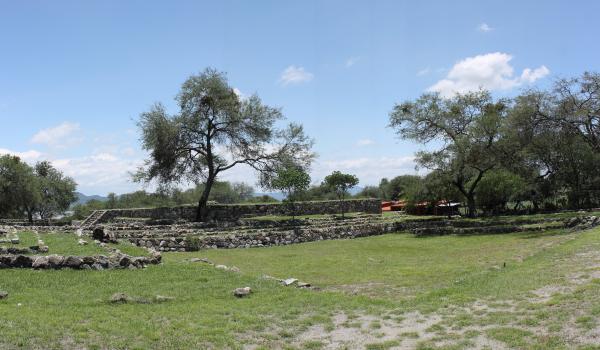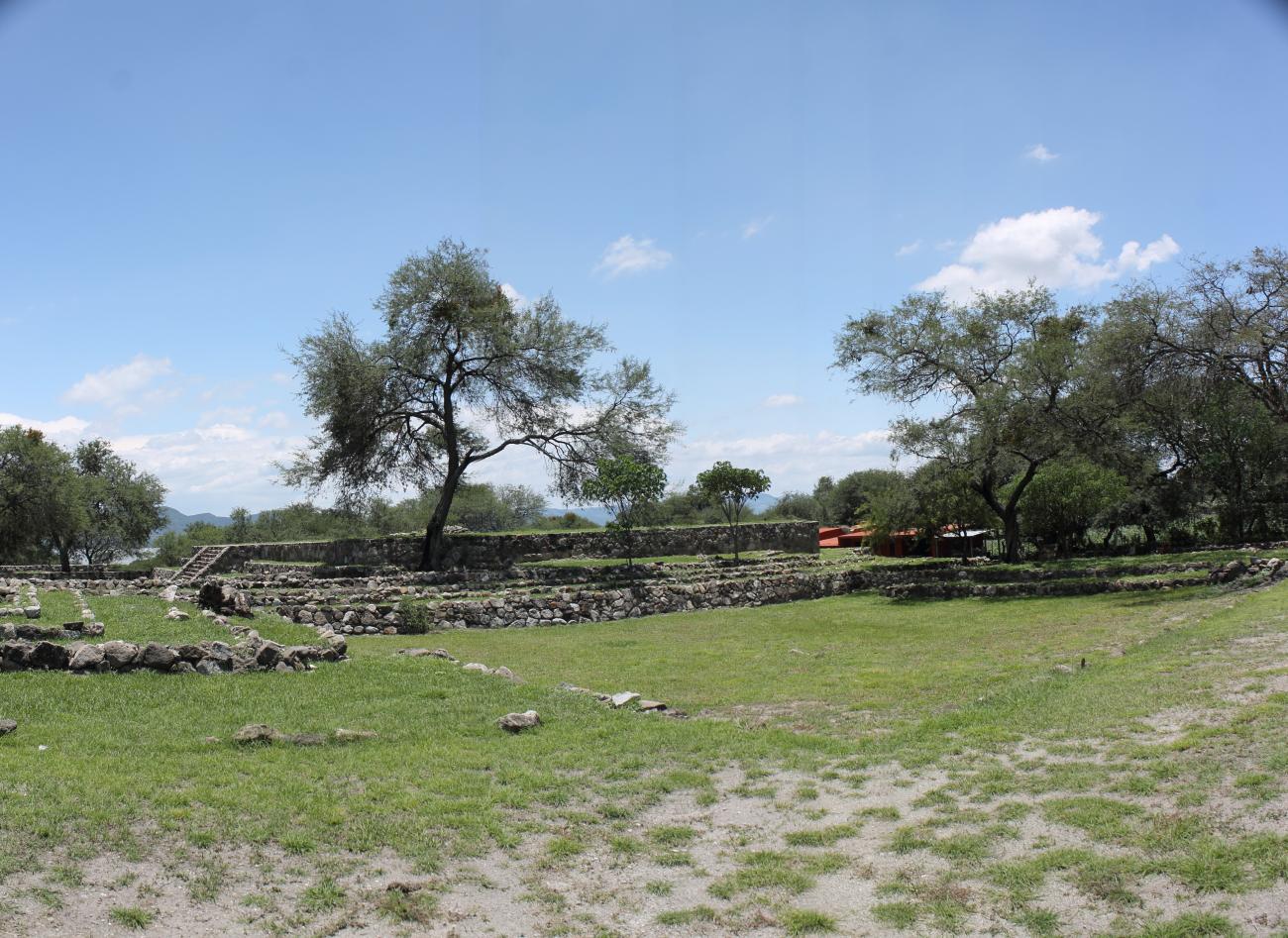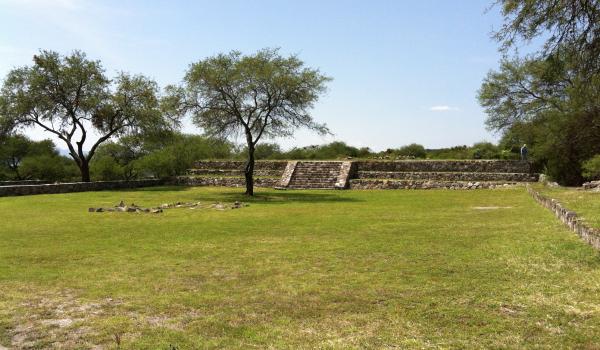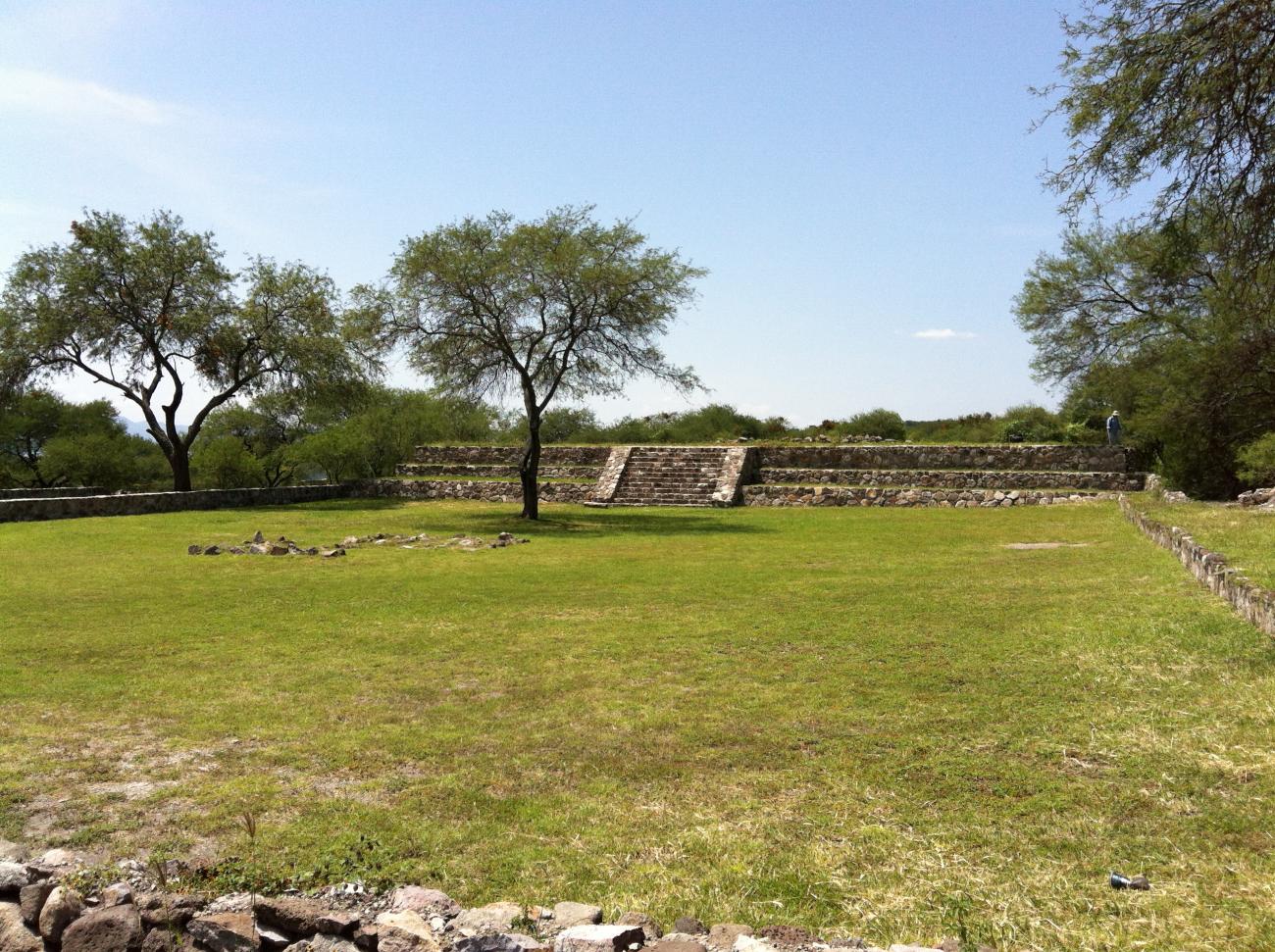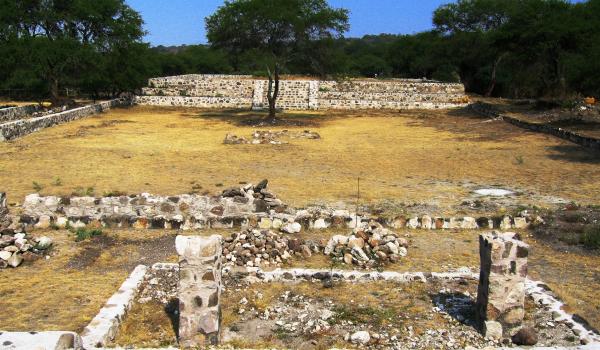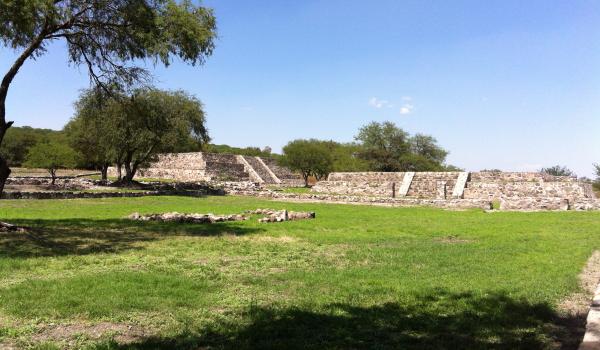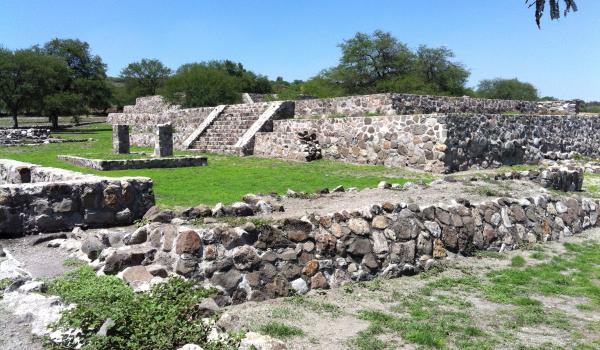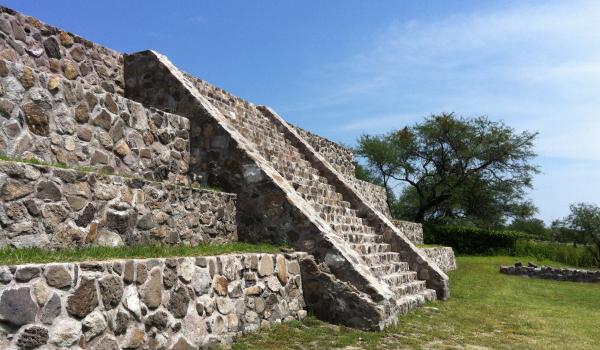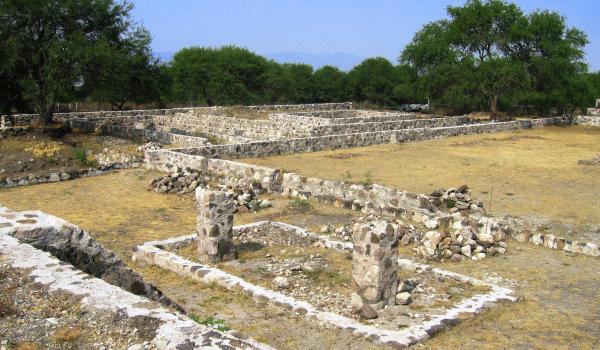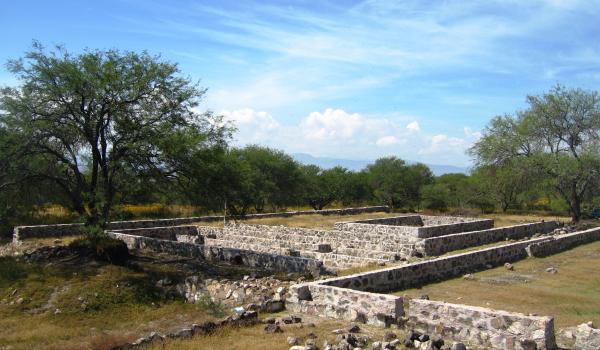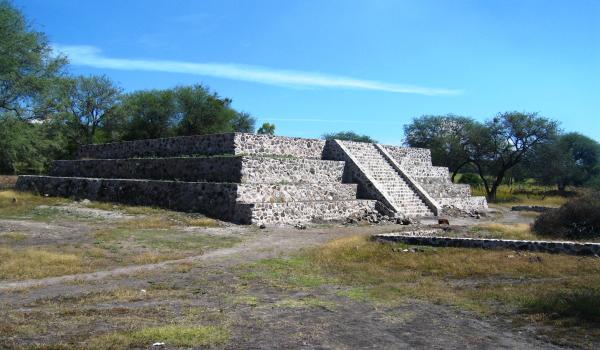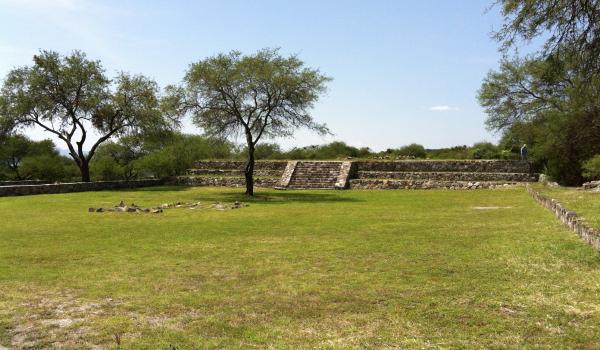Tres Cerritos is one of the few settlements in the basin of Cuitzeo to have been excavated systematically. It was opened to the public after more than ten years’ work, which began in 1984 under the guidance of the archeologist Angelina Macías. Data obtained at this site has contributed significantly to our understanding of various periods in the region.
It is a sober site characterized by low platforms constructed with earth and stone cores. The walls have no decorative elements, although we can see adjacent petroglyphs in some cases. During exploration of Mound 3, some walls were found which were similar to the talud-tablero (slope-and-wall) style of Teotihuacan. However, this was an isolated example.
Funerary architecture is one of Tres Cerritos’ main attributes, as can be seen in the tombs located on Mounds 2 and 3. Their layout (a central hallway and four chambers placed on the points of the compass) allow us a glimpse of the inhabitants’ cosmogonic notions. Moreover, the offerings that accompanied these burials tell us how elaborate their beliefs concerning death were.
At least two significant periods of occupation have been established for this settlement. The first is associated with the local development of Cuitzeo, when the site operated as an important ceremonial center, although Tres Cerritos was one of several ceremonial centers existing in the basin. Ceramic and architectural elements which are very similar to those from Teotihuacan can be seen in this first stage. Rather than indicating submission to this city, they appear to reveal that their adoption was a symbol of the local elite’s status.
The second stage of occupation is related to the arrival of groups linked to the Tarascan empire, who used part of the zone to bury their dead. This is apparent from the discovery of various bodies located on the walls and within collapsed structures, from which we infer that Tres Cerritos had already been abandoned for many years.

